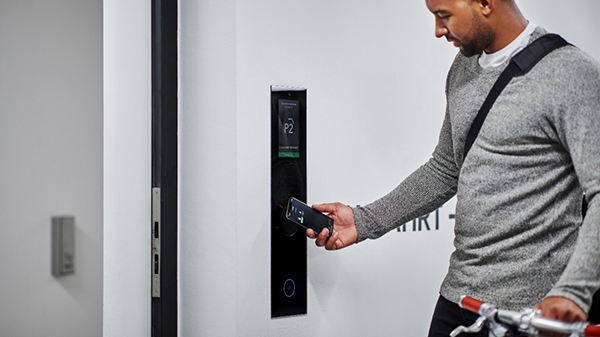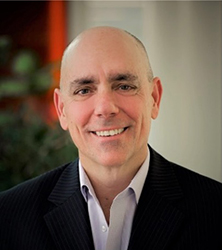How strategic planning and next gen interconnected elevators can enable transformation of increasingly vacant office space.
When the world shut down in 2020, building managers quickly found new ways to keep tenants safe amidst the unknown – from social distancing and sanitized handrails to an influx of air purifiers. Now, in 2024, with many companies shifting to hybrid or remote work, a new challenge has emerged – how can vacant office space be repurposed? The solve – bringing everything someone needs under one roof. Enter: vertical villages.
According to an analysis from Edward Glaeser and Carlo Ratti, a pair of urbanism experts from Harvard and MIT, New York City’s empty office space could fill 26 Empire State buildings. With the rising popularity of buildings with flexible design, those spaces can be reimagined into a variety of contexts, such as housing, retail, dining and more. If a space is truly multi-use, either through retrofitting to be that way or in its initial design, developers circumvent the need to demolish the existing building and start from square one, cutting down on time, cost and carbon emissions. The concept of spaces that extend beyond one homogenous purpose or use caters to the increasing desire for convenience that many became accustomed to during the pandemic. In fact, during and in the immediate aftermath of the pandemic, a related concept commonly referred to as “the 15-minute city” or “vertical villages” swelled in popularity. Under the 15-minute city structure, building tenants can live, work and play all within a short walk! If a single building were truly multi-use, for example, a tenant would be able to take a simple elevator ride to a grocery store or restaurant and be back home in minutes. This is the idea behind a vertical village, housing everything from entertainment to doctors’ offices to apartments. The concept may be a simple one, but the execution requires smart, connected building equipment and systems that allow for smooth and secure transitions between each facet of the structure. This is where the invention that enabled our urban cityscapes in the first place makes it mark once again.

Technology is constantly changing the way we interact with the world. For instance, you can now pay for your groceries at Whole Foods with just the scan of your palm thanks to Amazon’s palm recognition service, Amazon One. In that same vein, elevators have benefited from technological advancements, such as Schindler Elevator Corporation’s solution to building transit management, Schindler PORT. One feature of this technology is Schindler myPORT – a smartphone-based app that allows tenants to move seamlessly throughout a building all from the touch of their phone. The app enables tenants to enter a building, call an elevator to their desired floor with certain customizable elements related to their needs, grant entry to visitors and even unlock their apartment door in a residential space.
With mixed-use buildings on the rise, technology will be imperative to ensure the security and organization of all the building’s systems. For example, Schindler myPORT allows for smart grouping of passengers, allowing only specific individuals to access certain floors. In a mixed-use building, this could look like ensuring residents, shoppers and office workers inhabiting the same building never interact with one another by only granting access to specific elevator banks based on their destination.
The Omniturm, a 45-floor building in Frankfurt, Germany, stands as an example of how buildings can be sustainably repurposed to meet the growing needs of urban populations. The Omniturm was originally designed as an office space, with various businesses entering the skyscraper daily before the pandemic. With Schindler MetaCore, the Omniturm has become the first skyscraper in Germany to connect people via a digital network and serves 2,200 workers, visitors and residents each day. Schindler MetaCore is the application of Schindler’s PORT technology that allows for the seamless transformation of buildings from singular use to multi-use. For instance, if you were to arrive at the Omniturm to access your office space, you would enter a designated lobby just for office workers and find an elevator car waiting to take you to your respective floor after using the myPORT app to alert the system of your arrival.
At the same time, a resident may be entering the building to return to their apartment. The resident would enter through a lobby different from the office workers and find an elevator car waiting to take them to their apartment floor. Because of the digital interconnectivity enabled by modern elevator technology, Schindler MetaCore can provide a seamless mobility experience for all Omniturm residents, employees and guests. In this case, the dreamy concept of a “vertical village” became a reality.

About the Author
Rick Piovano joined Schindler in January 2021 as a Director of Key Accounts, leading the US Large Projects Division sales organization. Shortly thereafter, Rick’s responsibilities expanded to include Global Account Management for the Americas, which he now leads full-time. He is responsible for several US-headquartered developers, architects and contractors serving as the Schindler liaison across the globe. Prior to joining Schindler, Rick spent 35+ years in the building technology market, working across the construction, service and retrofit segments in a variety of sales management and global account roles for Johnson Controls, Siemens, and Honeywell both in the US and Europe.
Scott Ellyson, CEO of East West Manufacturing, brings decades of global manufacturing and supply chain leadership to the conversation. In this episode, he shares practical insights on scaling operations, navigating complexity, and building resilient manufacturing networks in an increasingly connected world.